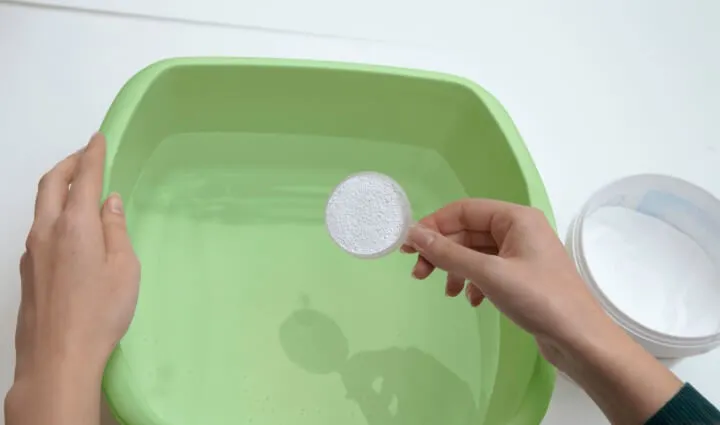Vinegar is a powerful ally when tackling mold on wood. Its acetic acid content not only disrupts the structure of mold spores but also prevents future growth. Many people prefer this natural solution because it’s non-toxic and readily available.
Various commercial products are designed for mold removal. They often contain harsh chemicals that may pose risks to health or the environment. Vinegar offers a safe alternative without compromising effectiveness.
It’s important to note that while vinegar is effective against many types of mold, some stubborn species might require additional treatment or more potent solutions. However, using vinegar can be an excellent first line of defense for minor infestations.
Whether you choose vinegar or another method depends on your specific situation and preferences. The key takeaway is that with proper application and precautions, vinegar can indeed be an efficient tool in your battle against mold on wood surfaces.
What is mold, and how does it grow on wood?

It thrives in damp environments, so mold is one of the most common forms of fungus. It reproduces through tiny pores that can quickly spread through the air. These spores can settle on various surfaces, including wood.
Wood provides an ideal habitat for mold due to its organic composition and ability to retain moisture. When conditions are right, like high humidity or water damage, mold can begin to grow.
This growth often appears as discolored patches ranging from black to green or white fuzz. If left unchecked, mold damages the wood and poses health risks by releasing allergens into the air.
Benefits of using vinegar to kill mold on wood
Vinegar is a powerful natural solution for combating mold on wood. Its acetic acid content effectively breaks down mold spores, making them challenging to thrive.
Vinegar is safe for the environment and your health. Unlike harsh chemicals, it doesn’t emit toxic fumes or leave harmful residues behind.
Another advantage of vinegar is its availability. Most households have this versatile ingredient in their kitchens, making it an accessible option without needing special purchases.
Vinegar kills existing mold and helps prevent future growth. Regular application can create an inhospitable environment for mold to re-establish itself.
A step-by-step guide to using vinegar for mold removal

Start by gathering your materials. You’ll need white vinegar, a spray bottle, gloves, and an old cloth or sponge.
Pour undiluted white vinegar into the spray bottle. Mixing it with water is unnecessary; its acidity makes it effective against mold.
Next, identify the affected areas on your wooden surface. Spray the vinegar directly onto the moldy spots. Be generous, but do not saturate the wood excessively.
A minimum of one hour should be allowed for it to sit. This waiting period helps the vinegar penetrate and kill any lingering spores.
Afterward, take your cloth or sponge and gently scrub away at the mold residue. If it soaks long enough, it should come off relatyou’veively quickly.
Other natural remedies for mold on wood
Vinegar is not the only natural option when battling mold on wood. Baking soda stands out as a versatile remedy. Its mild abrasive properties help scrub away stubborn spots while also neutralizing odors.
Tea tree oil is another potent choice. Just a few drops diluted in water can create an effective antifungal solution. It not only tackles mold but also leaves behind a fresh scent.
Hydrogen peroxide, with its disinfecting qualities, offers additional support. Spray it directly onto the affected area and let it sit before wiping it clean for impressive results.
Lemon juice boasts a natural acidity that hinders mold growth. Combine it with salt for added scrubbing power, making cleanup easier without harsh chemicals.
These remedies provide eco-friendly alternatives to conventional products, promoting healthier living spaces while effectively addressing unwanted mold issues on wood surfaces.
Safety precautions when using vinegar for mold removal
Safety is key when tackling mold removal with vinegar. You should start by ensuring the area has proper ventilation. Make sure the windows and doors are open to allow fresh air to circulate.
Wear protective gear, such as gloves and a mask, to shield your skin and lungs from any spores released during cleaning. Those with allergies or respiratory issues should take special care to avoid pollen and other allergens.
Whenever possible, avoid mixing vinegar with bleach or any other harsh chemicals. The combination can create toxic fumes that are harmful to breathe in.
Test a small, inconspicuous area of the wood first before applying vinegar extensively. This will help ensure there’s no adverse reaction on the surface.
Keep children and pets away from the work zone until everything dries completely. Safety should always come first when dealing with potentially hazardous situations like mold growth.




